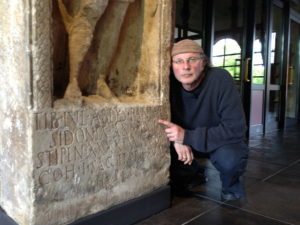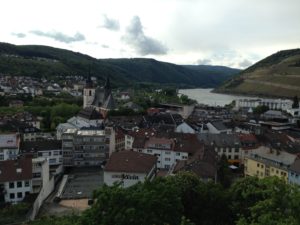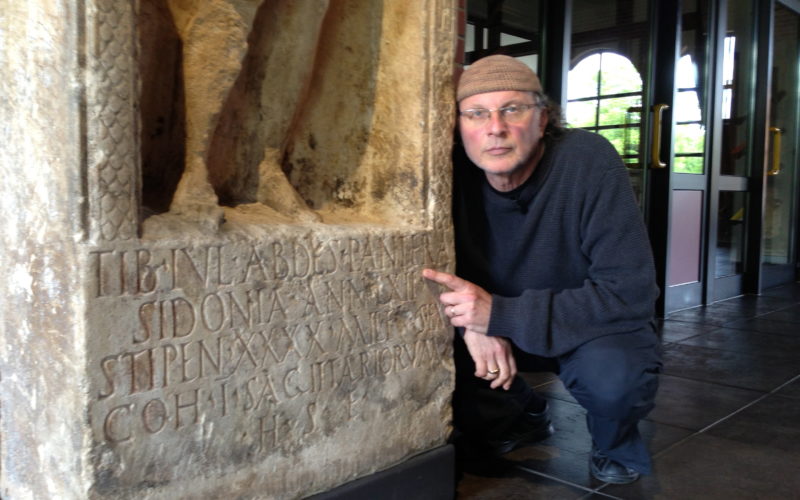Jesus’ Biological Father!

Last week, I travelled to Bad Kreuznach, Germany, just outside of Frankfurt. In the 1st century, there seems to have been a “dialectical” relationship between Judea and this area, close to the Rhine, on the outermost border of the Roman Empire.
“Dialectical” basically means “interplay”, a kind of ping-pong between different forces or ideas.
So consider this: when Herod the Great died around 4 BCE/BC, there was an uprising in Judea led by three messianic figures. One of them was called “Simon” from the area of Peraea, modern day Jordan. Simon was crushed by a Roman force led by the general Varus. Varus loved to crucify Jews, but when he defeated Simon, he didn’t crucify him. Instead, he decapitated him and left his body to rot in a gully.
Prof. Israel Knohl wrote a book, and I made a film (Episode 2), arguing that a memorial stone – discovered in Jordan – records the idea of a three-day spiritual resurrection, linked to Simon of Peraea. Basically, when General Varus killed Simon, Simon’s followers came up with the idea that even though Simon died physically, he spiritually rose.
It seems that John the Baptist, Jesus’ cousin, was a follower of Simon’s. It was John who baptized Jesus, and the rest is history. The idea of the 3-day resurrection became the basis of Christianity. So, in a sense, Varus started it all with his cruelty in Judea.
What does Simon’s story have to do with Germany?

The defeat at Teutoburg Forest was avenged by the Roman general Germanicus, adopted son of Emperor Tiberius, in 14 and 15 CE. Germanicus recaptured two of the lost eagles and even managed to capture the pregnant wife of Arminius, the tribal chief who defeated Varus.
So what does this have to do with Judea and how is it connected to Jesus?

We now know that, in Germanicus’ army, there was an officer named Tiberius Julius Pantera, a bowman. He died at the age of 62 and he was buried with honors in Bingerbrück. He carried the standards of the legion. He was not originally from Germany, nor was he from Rome. In fact, he was born in Sidon, just north of the Galilee and it seems that he served in the area of Judea just after Herod died and before Jesus was born, during the reign of emperor Tiberius. Originally, he had been taken captive but he got his freedom after serving in the Roman army and he took on the name “Tiberius”, after the emperor who liberated him. It was during this emperor’s reign that Jesus was crucified.
All sources agree that Jesus’ father was not Joseph. All the Gospels say so. Of course, Christians believe that Jesus’ mother, Mary, was impregnated by the Holy Spirit. But the Rabbinic Talmud calls Jesus “Ben Pantera”, son of Pantera. And the 2nd century pagan philosopher, Celsus, states that Jesus’ biological father was a man named “Pantera”. He adds one more thing. He calls Pantera “a Roman soldier”.
So, if you leave theology out of it, here’s the dialectical relationship: Varus kills Simon in the area of Judea, giving rise to the three-day resurrection idea, and then gets himself butchered in Germany. Pantera fathers Jesus, and then goes to Germany where, under Germanicus, he avenges Varus who started the whole cycle. General Germanicus then goes to the Middle East to head a Roman army which would soon crucify Pantera’s son – Jesus.

